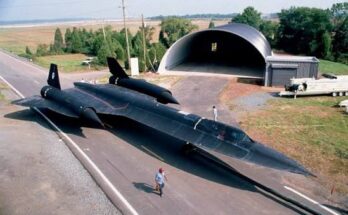
The Tragic Fall of Air France Flight 4590: The Concorde Crash That Ended an Era
On July 25, 2000, Air France Flight 4590, a Concorde supersonic passenger jet, crashed shortly after takeoff from Charles de Gaulle Airport in Paris. The aircraft, bound for New York’s John F. Kennedy International Airport, was on an international charter flight carrying 100 passengers, mostly German tourists, and nine crew members. Tragically, all onboard perished, along with four people on the ground.
This disaster marked the first and only fatal crash involving the Concorde, an aircraft once hailed as the pinnacle of aviation engineering. The incident not only shocked the world but also led to the eventual retirement of the Concorde fleet just three years later.
The Sequence of Events: A Catastrophic Chain Reaction
Air France Flight 4590’s departure was delayed due to a late arrival of the aircraft. However, once cleared for takeoff, everything seemed normal—until disaster struck.
As the Concorde accelerated down the runway, it ran over a thin metal strip that had fallen from another aircraft—a Continental Airlines DC-10 that had taken off earlier. This strip, a titanium alloy component from the engine cowling, punctured the Concorde’s left front tire. The tire exploded, sending debris hurtling toward the underside of the left wing.
The high-speed impact of the debris punctured a fuel tank in the left wing, leading to an immediate fuel leak. The leaking fuel ignited, creating a massive fire trailing from the wing. The aircraft, already committed to takeoff due to its high speed, struggled to gain altitude.

Witnesses, including air traffic controllers and other pilots, saw flames erupt from the left side of the Concorde as it lifted off the ground. The crew, realizing the severity of the situation, attempted to respond but quickly lost control of the aircraft. The fire compromised the structural integrity of the wing and caused engine failures.
Barely a minute after takeoff, the Concorde was unable to sustain flight. The aircraft pitched up steeply before rolling to the left and crashing into a hotel in Gonesse, a suburb of Paris. All 109 people onboard, as well as four people on the ground, were killed.
The Aftermath: Investigation and Findings
The crash prompted an immediate investigation by the French Bureau of Enquiry and Analysis for Civil Aviation Safety (BEA). The findings pointed to several key factors:
1. Foreign Object Debris (FOD): The titanium strip on the runway, which had fallen from the Continental Airlines DC-10, was identified as the root cause. Investigators concluded that the strip punctured the Concorde’s tire, leading to the catastrophic chain reaction.
2. Fuel Tank Vulnerability: The design of the Concorde’s fuel tanks made them susceptible to rupture from high-speed debris impacts. The tanks lacked adequate reinforcement to prevent fuel from leaking and igniting.
3. Weight and Balance Issues: Investigators also noted that the aircraft was slightly overweight due to fuel adjustments made before departure, which affected its ability to recover from the emergency.
As a result of these findings, Continental Airlines and two of its employees were held legally responsible for the accident in a French court in 2010. However, the airline denied liability, and the ruling was later overturned in 2012.
The Impact on the Concorde Program
Before the crash, the Concorde was an icon of luxury air travel, known for its ability to fly at twice the speed of sound and cut transatlantic flight times in half. However, Flight 4590’s disaster shattered public confidence in the aircraft.
Following the crash, all Concorde aircraft were grounded while safety modifications were made. These included:
• Stronger Tires: New reinforced tires were installed to reduce the risk of rupture from debris.
• Kevlar-Lined Fuel Tanks: Fuel tanks were reinforced with Kevlar lining to prevent punctures and fuel leaks.
• Improved Takeoff Procedures: Operational changes were made to enhance pre-flight safety checks.
Despite these improvements, the Concorde never fully recovered. The tragic event, combined with a decline in passenger demand after the September 11, 2001 attacks and rising maintenance costs, led to the final retirement of the Concorde fleet in 2003.

The Legacy of Air France Flight 4590
The Concorde crash remains one of the most significant disasters in aviation history, not only because it marked the end of a technological marvel but also because it highlighted critical lessons about aircraft safety.
1. Importance of Runway Inspections: The incident underscored the importance of rigorous runway inspections to remove foreign objects that could endanger aircraft.
2. Aircraft Design Safety Enhancements: The crash led to improvements in fuel tank design, influencing future aircraft development.
3. Operational Changes in Aviation: Airlines and regulators implemented stricter guidelines to prevent similar accidents, reinforcing industry-wide safety standards.
Could the Concorde Have Been Saved?
Many aviation experts believe that the Concorde’s fate was already sealed due to economic and operational challenges. The aircraft was costly to maintain, had limited passenger capacity, and faced competition from more fuel-efficient jets. The crash of Flight 4590 merely accelerated its retirement.
Some enthusiasts and engineers have advocated for a Concorde revival, citing the growing interest in supersonic travel. Companies like Boom Supersonic are developing new aircraft that aim to bring back supersonic passenger flights—this time with modern safety features and economic viability.
Conclusion: A Tragic End to an Aviation Icon
The crash of Air France Flight 4590 was a heartbreaking moment in aviation history, claiming the lives of 113 people and bringing an end to the Concorde’s commercial era. However, the legacy of this incident lives on in improved aviation safety measures and ongoing efforts to develop the next generation of supersonic air travel.
While the Concorde no longer graces the skies, its legend endures. It remains a symbol of engineering brilliance, a reminder of both the triumphs and challenges of pushing the boundaries of aviation. The lessons learned from Flight 4590 continue to shape the future of air travel, ensuring that safety remains at the forefront of innovation.


